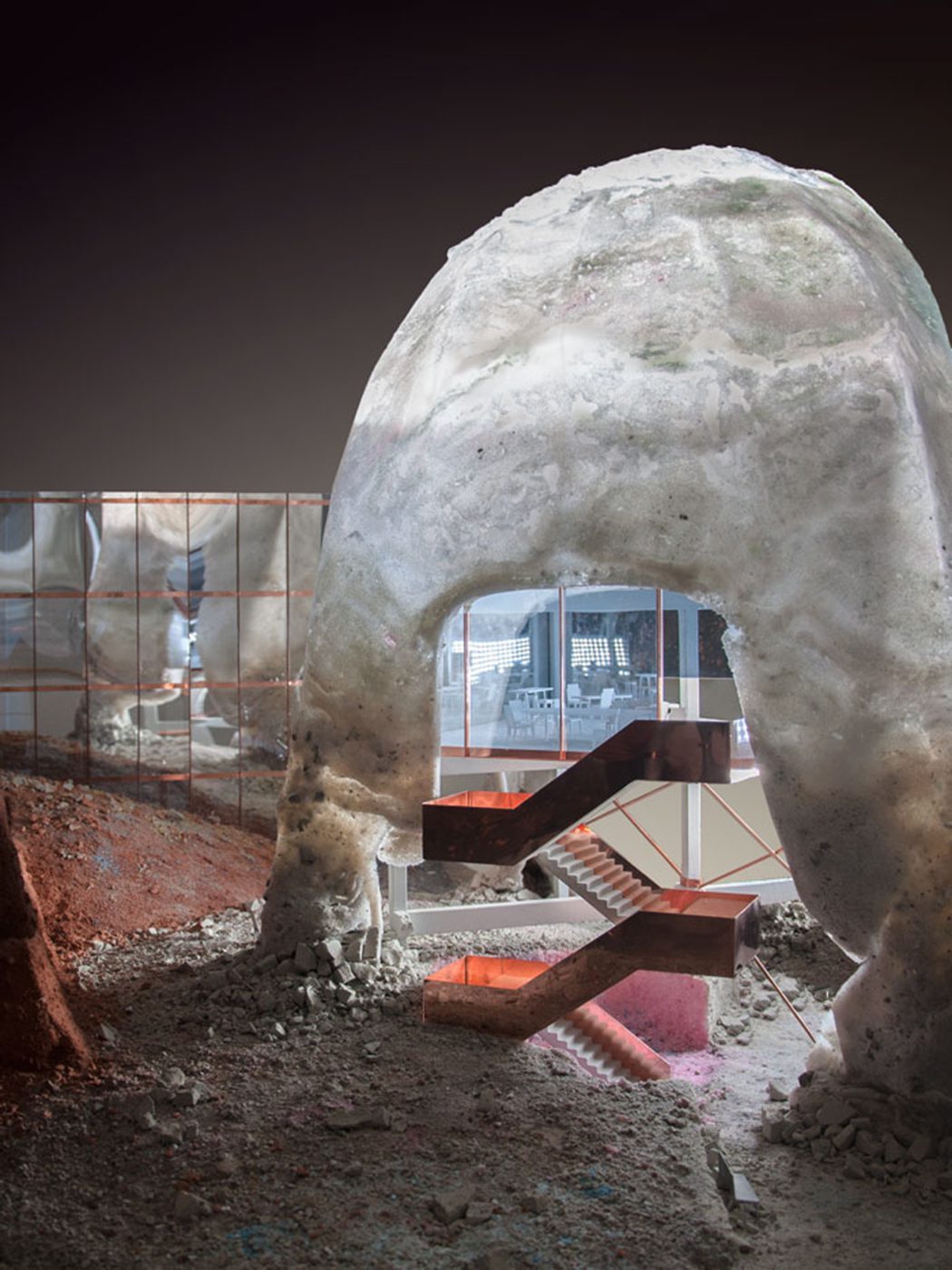
Detroit Reassembly Plant
Published:
01/30/2016
Detroit Reassembly Plant is a T+E+A+M project, made for The Architectural Imagination, the 2016 U.S. Pavilion exhibition at the Venice Biennale, curated by Monica Ponce de Leon and Cynthia Davidson. The exhibition was focused on speculative building proposals for Detroit, MI and T+E+A+M was asked to develop a proposal for the Packard Plant, a large, abandoned automobile factory.
The project begins with the premise that Detroit doesn’t have a material problem, its material has an image problem. Given architecture’s capacity to work on both materials and images, the project aims to flip current perceptions: where others see an excess of ruins, we see an abundance of material resources for building.
Detroit Reassembly Plant recasts the project’s site from a vacant factory to a rich stockpile of concrete, brick, and other construction materials. The existing buildings are selectively demolished to mine these materials, which are mixed with plastics and other post-consumer materials from the region’s waste streams. The resulting aggregate mixture becomes a new building material which is cast into various forms: mega-masonry mountains with hypostyle interiors; monolithic cast-in-place shells that drape over preserved columns and beams; room-sized cast-in-place chunks that sit within existing structural grids; and conical, free-standing sheds. These structures host a range of programs: material processing, production and fabrication, public exhibitions, and a research institute for advanced building technologies.
In the cultural imaginary of Detroit, vacant properties and their debris are synonymous with neglect, crime, and the fallout from the city’s post-industrial decline. Our project ascribes value to this building detritus and transforms Detroit’s scarcity of resources into an abundance. The Packard Plant has always been a site of experimentation and innovation: it was the first factory constructed from reinforced concrete; it made automobiles, Detroit’s signature contribution to American industrial ingenuity; and more recently, art and music projects have flourished within its vast spaces. Detroit Reassembly Plant retains this spirit of innovation and change, approaching construction technology as experimental, prototypical, and extensible. It replaces the modernist paradigm of material economy and spatial efficiency with an approach to building that is materially rich and spatially varied. It substitutes the solid perimeter of the factory enclave with a porous campus of buildings, landforms, and open spaces. By remixing and reassembling Detroit’s unwanted materials, architecture and its image become the city’s primary exports.
Faculty:
Ellie Abrons
Adam Fure
Thomas Moran
Meredith Miller





